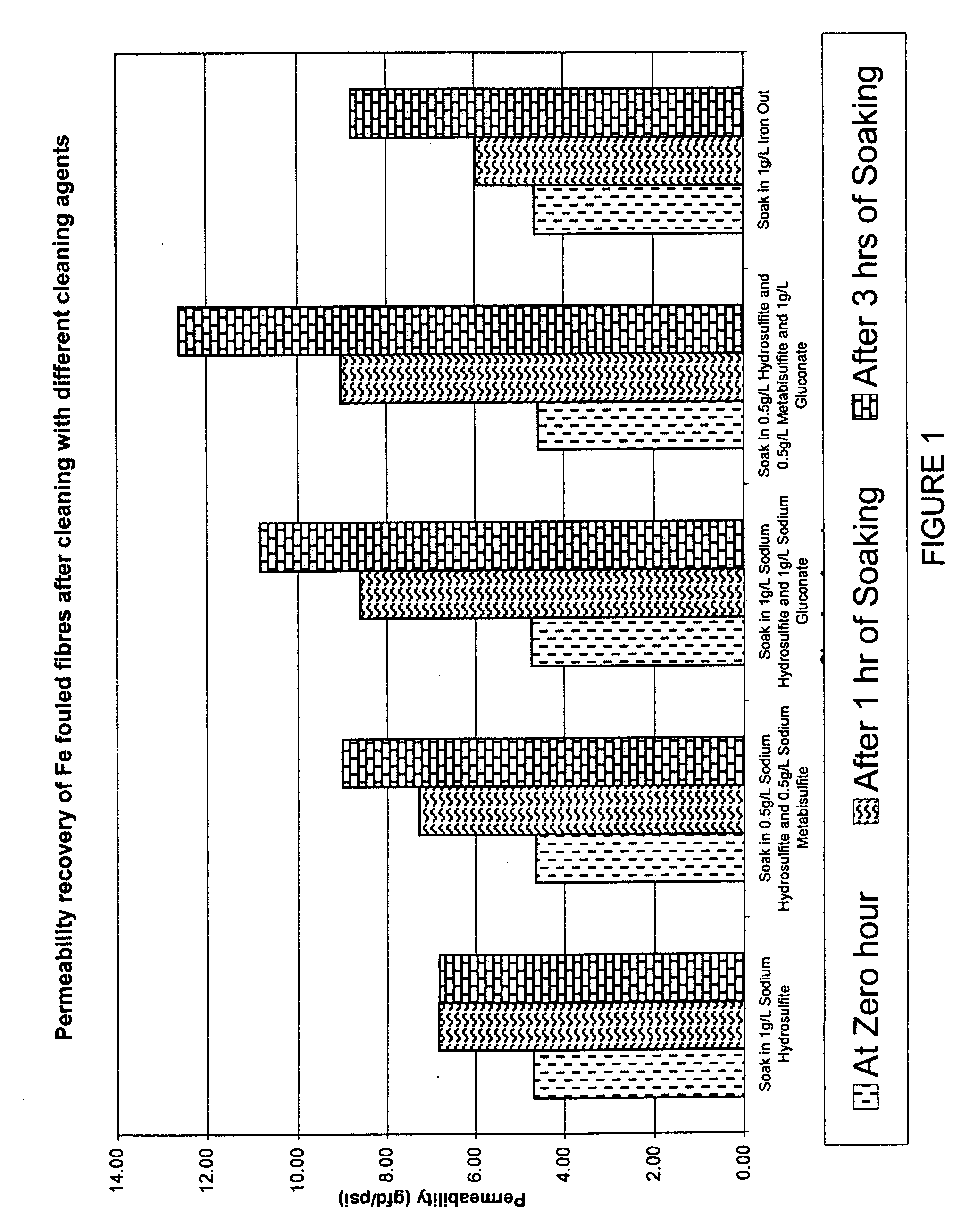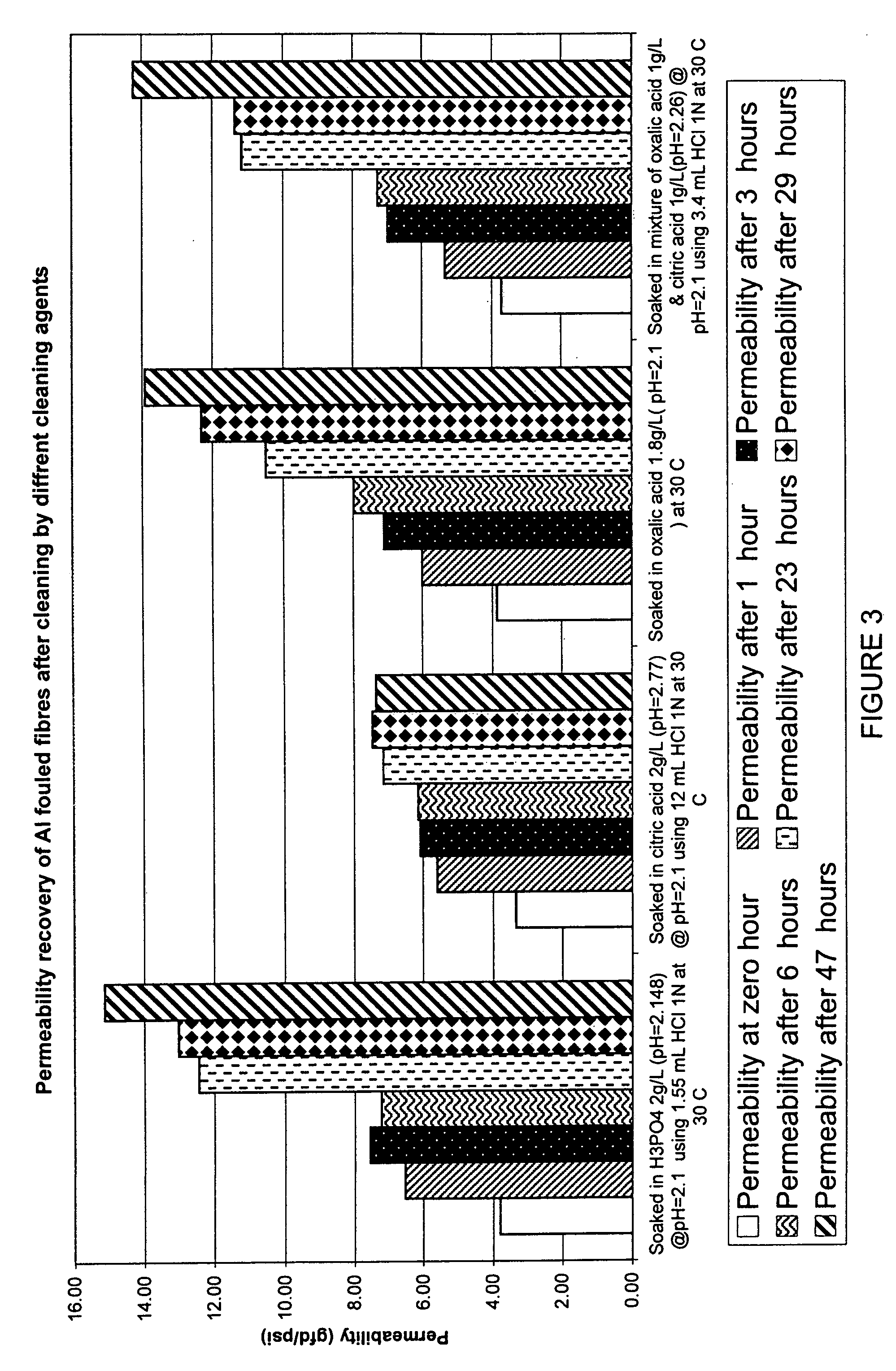Chemical cleaning for membranes
a technology of membranes and electrolytes, applied in the direction of membranes, inorganic non-surface active detergent compositions, separation processes, etc., can solve the problem of not enough electrolyte flowing through the membrane to kill numerically more than 20% of the living bacteria in the dirty water
- Summary
- Abstract
- Description
- Claims
- Application Information
AI Technical Summary
Benefits of technology
Problems solved by technology
Method used
Image
Examples
Embodiment Construction
[0013] The following description describes embodiments of the invention to provide examples of the invention. The invention is not limited to these examples.
[0014] Membrane treatment systems are described generally in U.S. Pat. No. 5,639,373, now reissued as RE37,549, and U.S. Pat. No. 6,325,928. A membrane treatment system involving the addition of a coagulant is described in U.S. Pat. No. 6,027,649. U.S. Pat. Nos. 5,639,373; RE37,549; 6,325,928; and, 6,027,649 are incorporated herein in their entirety by this reference to them.
[0015] Immersed, suction driven, polymeric membranes with pores in the ultrafiltration or microfiltration range may be used to treat water. The treatment process may involve adding aluminum sulfite or another aluminum based coagulant in a pretreatment step prior to filtering the water with the membranes. The pretreatment step may be performed directly upstream of the membranes or otherwise such that the membranes are exposed to the coagulant. Membranes use...
PUM
| Property | Measurement | Unit |
|---|---|---|
| pressure | aaaaa | aaaaa |
| time | aaaaa | aaaaa |
| time | aaaaa | aaaaa |
Abstract
Description
Claims
Application Information
 Login to View More
Login to View More - R&D
- Intellectual Property
- Life Sciences
- Materials
- Tech Scout
- Unparalleled Data Quality
- Higher Quality Content
- 60% Fewer Hallucinations
Browse by: Latest US Patents, China's latest patents, Technical Efficacy Thesaurus, Application Domain, Technology Topic, Popular Technical Reports.
© 2025 PatSnap. All rights reserved.Legal|Privacy policy|Modern Slavery Act Transparency Statement|Sitemap|About US| Contact US: help@patsnap.com



